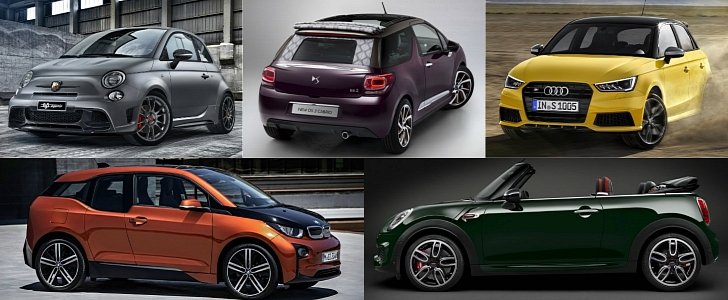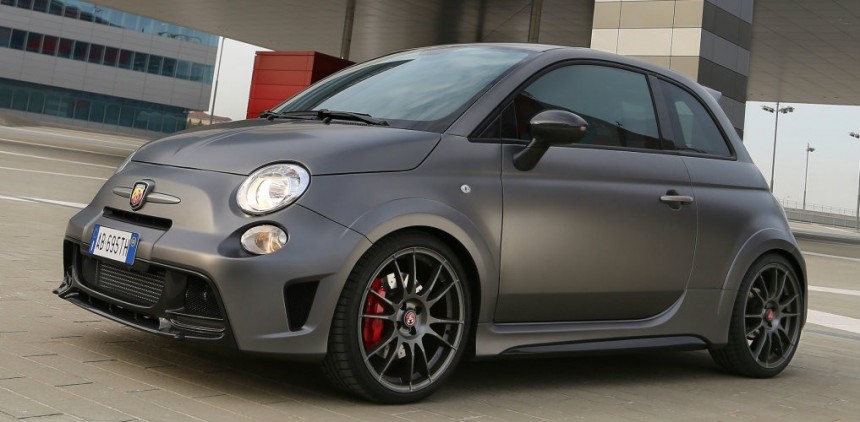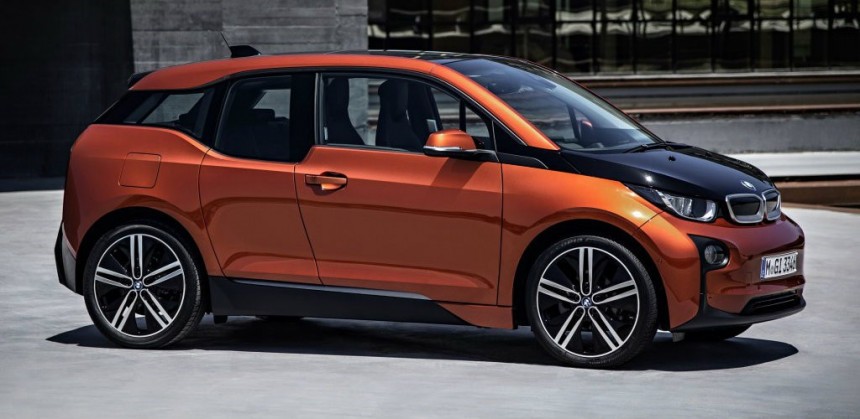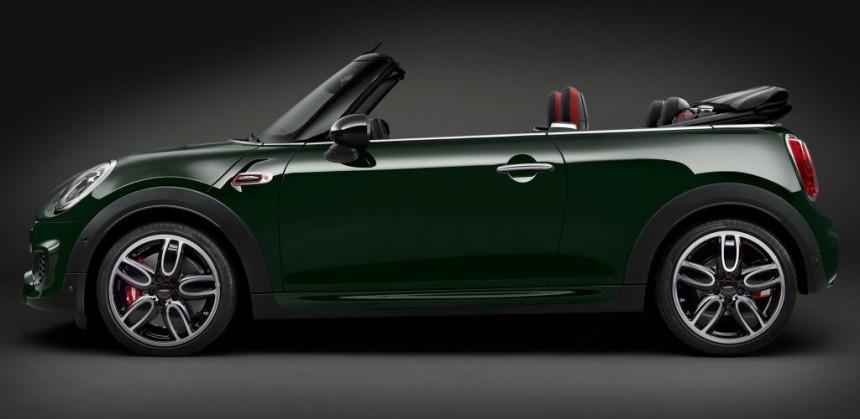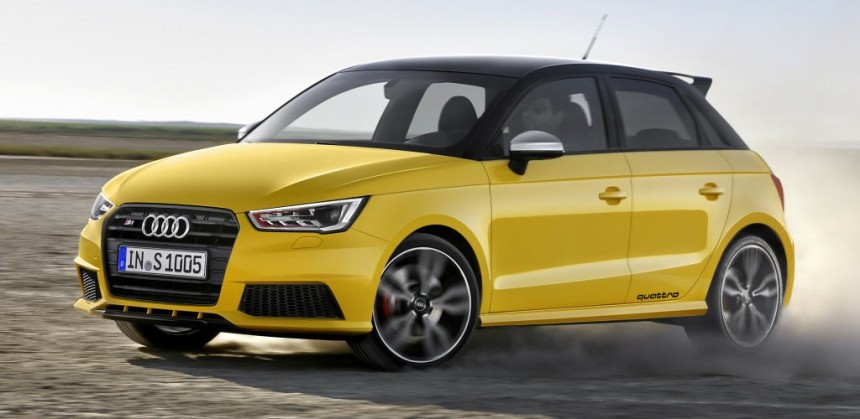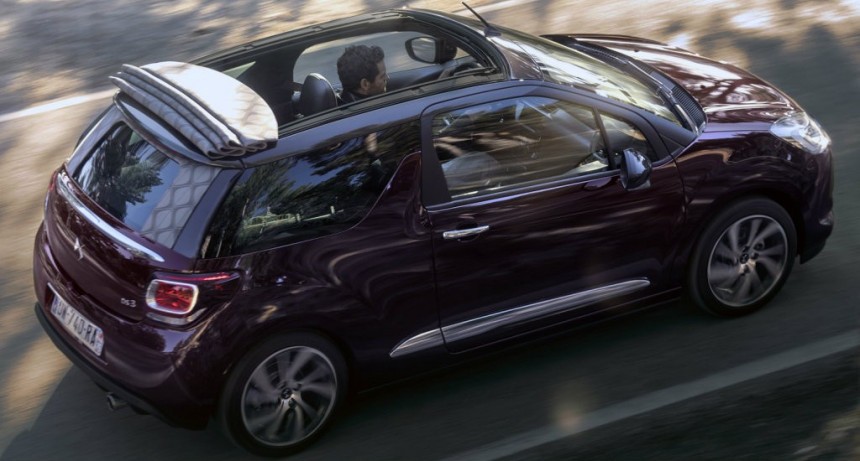Responding to an ever-changing market prompted carmakers to change the characteristics of vehicle segments more often than Michael Jackson changed his nose. One of those characteristics is pricing. As I’m sure you know, today’s small cars can get a little bit overpriced if you correlate the price with size. Wait, scrap that idea. What I meant is that the consumer is charged by automakers an arm and a leg for the delight of owning a well-to-do runaround.
The Nuova 500 and the current Fiat 500 come to mind as the perfect case in point. The 1957 Cinquecento designed by Dante Giacosa measures 116.9 inches (2.97 meters) in length and it tips the scales at 1,100 lbs (499 kg). The Fiat 500 of the 21st century, on the other hand, is 139.6 inches (3.54 meters) long and it has a curb weight of 2,072 lbs (940 kilograms) in 1.2 Pop form.
What’s wrong with this picture? Grandpa and junior are classified as city cars. You know, the European A-segment. My, how the Fiat 500 has changed over half a century. On top of getting fatter than I do after a visit to the pie shop, the pricing of the 500 also changed.
Back when the average worker earned 30,000 Italian lire per month, the Fiat 500 was priced at 450,000 Italian lire. That’s just about 15 monthly wages. The Euro-spec 2016 Fiat 500, though, is priced at €13,600 in Italy. Divide the starting price by the average minimum wage in the EU (€712) and the result speaks for itself - the most spartan 500 costs the equivalent to 19 monthly salaries.
Other than the added technology, safety, fuel efficiency, and space, inflation, the change from Italian lira to euro, and so on, I am well aware that many other baffling factors contributed to the pricing increase of the Fiat 500. The truth of the matter is, small cars have gotten more expensive than they were back in the ‘50s when everyone could afford cheap and cheerful automobiles such as the Fiat 500, Citroen 2CV, and the Volkswagen Beetle (Typ 1).
Under the circumstances of this not-too-scientific conclusion, the autoevolution team’s sensible consumer journalism alert went off. The Aston Martin Cygnet has been consigned to the history books, which made us wonder what are the most expensive small cars you can buy today? In an unexpected turn of events, a Fiat leads the ranking, followed by three German models and (are you sitting down?) a Citroen with a rag top which isn’t called a Citroen.
Dubbed “the smallest supercar,” the Abarth 695 Biposto is the ultimate expression of a Fiat 500 with license plates. The Abarth skunkworks outdid itself this time around. Thanks to a curb weight of 2,198 pounds (997 kilograms), 190 horsepower from a 1.4-liter T-Jet engine, and a Bacci Romano dog ring transmission teamed with a mechanical self-locking differential, the Abarth 695 Biposto can accelerate to 62 mph (100 km/h) in a rather quick 5.9 seconds.
Better still, can you imagine what it feels like to max this little rascal on the Autobahn? 143 mph (230 km/h) in such a small car isn’t for the faint of heart. Born from the motorsport pedigree of the Abarth 695 Assetto Corse Evoluzione, the 695 Biposto isn’t exactly the best small car for daily driving. Some people say owners of the Biposto have the orthopedist on speed dial. They’re probably right.
The highlight, however, is the manufacturer’s suggested retail price for the Abarth 695 Biposto. €39,900 is $43,910 according to current exchange rates. The 2016 Chevrolet Camaro 2SS with the 455 horsepower V8 is $42,295. I think I made my point. Let’s move on to the second most expensive small car on sale at the moment.
I’ll be honest with you on this one. The BMW i3 isn’t the best small electric vehicle out there and it’s definitely not a cheap thrill. As recurrent autoevolution readers know, the range extender isn’t helping the i3 in its quest for maximum range or eco-friendliness.
The range extender adds 264 pounds (120 kilograms) to the Euro-spec BMW i3, weight which defeats the purpose of the range extender. The normal i3 can travel up to 99 miles (160 kilometers) on a single charge, though a fine print from BMW reads: “the range of the BMW i3 is influenced by many things.” Thanks for nothing, BMW!
I don’t like the BMW i3 because it offers too little in return for what you pay for it. As for the BMW i3 REx, please don’t. For crying out loud, even the Nissan Leaf is a more honest EV. I understand that breaking new ground in the electric vehicle domain comes with compromises. But then again, I won’t compromise €39,450 ($46,250 for the US model) on the BMW i3 with range extender. Despite my rant, I secretly wish for the second-generation BMW i3 to be better.
As a practical urban runaround, the MINI isn’t the go-to model in the small car segment. It’s a thoroughly fun car, though, one that can make grown men giggle like little girls on a school trip. In spite of its natural-born fun factor, the MINI levels up from fun to exciting as long as a John Cooper Works badge is added to the formula.
Cue the MINI JCW Convertible, the most exhilarating model in the British manufacturer’s range. Torsional stiffness yabber, yabber, nobody cares about that as long as there are 86 million miles of sky above your head. Better still, less soundproofing than what you get with the 3-door MINI JCW equals a better way to enjoy the exhaust.
Most of its benefits come into their own especially when the top is open. 228 horsepower (231 PS), 6.5 seconds to 62 mph (100 km/h), and thrilling handling properties don’t lie. On the downside, it’s a shame that the pricing of the MINI JCW Convertible in Germany is similar to that of a Mercedes-Benz C 180 compact executive sedan.
The smallest S-branded Audi is a noteworthy pocket rocket. A 2.0 TFSI turbo-4 motivates it with 228 horsepower (221 PS) and no less than 273 lb-ft (370 Nm) of torque. Vector in go-faster goodies such as quattro all-wheel-drive and four-link design suspension at the rear end and you get the fastest small car ever made by Audi.
The focus point of the Audi S1 Sportback isn’t that it gathers speed faster than the 3-door MINI John Cooper Works. It’s the all-around package. The performance will most definitely impress you, but when you’re not in the mood to carve corners, the practicality of this 5-door supermini comes into the limelight. Its 7.4 cuFT (210 l) trunk isn’t cavernous, yet it’s a travel bag away from the 9.8 cuFT (280 l) boot of the Polo on which the Audi S1 Sportback is based.
And just like the Volkswagen Polo, the Audi S1 Sportback can seat five people. Just. €31,100 ($34,310) is the price of this thing, which is approximately double the price of an Audi A1 Sportback with the 1.0 TFSI and the 5-speed manual transmission. Come on, Audi, when will you offer the S1 Sportback in the United States as a substitute to the not-as-hot Ford Fiesta ST and Fiat 500 Abarth?
390,000 customers can’t be wrong. That’s how many DS 3s have been delivered since Citroen launched the posh supermini back in 2010. For 2016, though, DS became a standalone brand and Citroen is trying to fool us into thinking that this isn’t a Citroen.
Dear Citroen, I couldn’t care less about what’s in a name. It’s common knowledge that names are arbitrary labels, especially for the automotive industry. The DS 3 epitomizes feelgood. The DS 3 doesn’t care about being at the forefront of the subcompact food chain, nor does it care about German quality this and German precision that. The DS 3 simply enjoys every day of its existence, especially if we’re talking about the DS 3 Cabrio and its fabric roof.
That frame of mind rubs off the owner and it’s tangible every time you get behind the steering wheel. Not of the DS 3 Cabrio Sport Chic BlueHDi 120 S&S, though, because that’s merde. The 1.6-liter turbo diesel engine doesn’t only cost more than the most powerful turbo petrol on offer, but it spoils the entire experience. Then again, a diesel engine under the hood of a supermini with a fabric roof is as wrong as a priest who enjoys going to the strip club.
What’s wrong with this picture? Grandpa and junior are classified as city cars. You know, the European A-segment. My, how the Fiat 500 has changed over half a century. On top of getting fatter than I do after a visit to the pie shop, the pricing of the 500 also changed.
Back when the average worker earned 30,000 Italian lire per month, the Fiat 500 was priced at 450,000 Italian lire. That’s just about 15 monthly wages. The Euro-spec 2016 Fiat 500, though, is priced at €13,600 in Italy. Divide the starting price by the average minimum wage in the EU (€712) and the result speaks for itself - the most spartan 500 costs the equivalent to 19 monthly salaries.
Other than the added technology, safety, fuel efficiency, and space, inflation, the change from Italian lira to euro, and so on, I am well aware that many other baffling factors contributed to the pricing increase of the Fiat 500. The truth of the matter is, small cars have gotten more expensive than they were back in the ‘50s when everyone could afford cheap and cheerful automobiles such as the Fiat 500, Citroen 2CV, and the Volkswagen Beetle (Typ 1).
Under the circumstances of this not-too-scientific conclusion, the autoevolution team’s sensible consumer journalism alert went off. The Aston Martin Cygnet has been consigned to the history books, which made us wonder what are the most expensive small cars you can buy today? In an unexpected turn of events, a Fiat leads the ranking, followed by three German models and (are you sitting down?) a Citroen with a rag top which isn’t called a Citroen.
Abarth 695 Biposto - €39,900 (retail price in Germany)
Better still, can you imagine what it feels like to max this little rascal on the Autobahn? 143 mph (230 km/h) in such a small car isn’t for the faint of heart. Born from the motorsport pedigree of the Abarth 695 Assetto Corse Evoluzione, the 695 Biposto isn’t exactly the best small car for daily driving. Some people say owners of the Biposto have the orthopedist on speed dial. They’re probably right.
The highlight, however, is the manufacturer’s suggested retail price for the Abarth 695 Biposto. €39,900 is $43,910 according to current exchange rates. The 2016 Chevrolet Camaro 2SS with the 455 horsepower V8 is $42,295. I think I made my point. Let’s move on to the second most expensive small car on sale at the moment.
BMW i3 REx - €39,450 (retail price in Germany)
The range extender adds 264 pounds (120 kilograms) to the Euro-spec BMW i3, weight which defeats the purpose of the range extender. The normal i3 can travel up to 99 miles (160 kilometers) on a single charge, though a fine print from BMW reads: “the range of the BMW i3 is influenced by many things.” Thanks for nothing, BMW!
I don’t like the BMW i3 because it offers too little in return for what you pay for it. As for the BMW i3 REx, please don’t. For crying out loud, even the Nissan Leaf is a more honest EV. I understand that breaking new ground in the electric vehicle domain comes with compromises. But then again, I won’t compromise €39,450 ($46,250 for the US model) on the BMW i3 with range extender. Despite my rant, I secretly wish for the second-generation BMW i3 to be better.
MINI John Cooper Works Convertible (F57) - €33,500 (retail price in Germany)
Cue the MINI JCW Convertible, the most exhilarating model in the British manufacturer’s range. Torsional stiffness yabber, yabber, nobody cares about that as long as there are 86 million miles of sky above your head. Better still, less soundproofing than what you get with the 3-door MINI JCW equals a better way to enjoy the exhaust.
Most of its benefits come into their own especially when the top is open. 228 horsepower (231 PS), 6.5 seconds to 62 mph (100 km/h), and thrilling handling properties don’t lie. On the downside, it’s a shame that the pricing of the MINI JCW Convertible in Germany is similar to that of a Mercedes-Benz C 180 compact executive sedan.
Audi S1 Sportback - €31,000 (retail price in Germany)
The focus point of the Audi S1 Sportback isn’t that it gathers speed faster than the 3-door MINI John Cooper Works. It’s the all-around package. The performance will most definitely impress you, but when you’re not in the mood to carve corners, the practicality of this 5-door supermini comes into the limelight. Its 7.4 cuFT (210 l) trunk isn’t cavernous, yet it’s a travel bag away from the 9.8 cuFT (280 l) boot of the Polo on which the Audi S1 Sportback is based.
And just like the Volkswagen Polo, the Audi S1 Sportback can seat five people. Just. €31,100 ($34,310) is the price of this thing, which is approximately double the price of an Audi A1 Sportback with the 1.0 TFSI and the 5-speed manual transmission. Come on, Audi, when will you offer the S1 Sportback in the United States as a substitute to the not-as-hot Ford Fiesta ST and Fiat 500 Abarth?
DS 3 Cabrio Sport Chic BlueHDi 120 S&S - €28,180 (retail price in Germany)
Dear Citroen, I couldn’t care less about what’s in a name. It’s common knowledge that names are arbitrary labels, especially for the automotive industry. The DS 3 epitomizes feelgood. The DS 3 doesn’t care about being at the forefront of the subcompact food chain, nor does it care about German quality this and German precision that. The DS 3 simply enjoys every day of its existence, especially if we’re talking about the DS 3 Cabrio and its fabric roof.
That frame of mind rubs off the owner and it’s tangible every time you get behind the steering wheel. Not of the DS 3 Cabrio Sport Chic BlueHDi 120 S&S, though, because that’s merde. The 1.6-liter turbo diesel engine doesn’t only cost more than the most powerful turbo petrol on offer, but it spoils the entire experience. Then again, a diesel engine under the hood of a supermini with a fabric roof is as wrong as a priest who enjoys going to the strip club.
